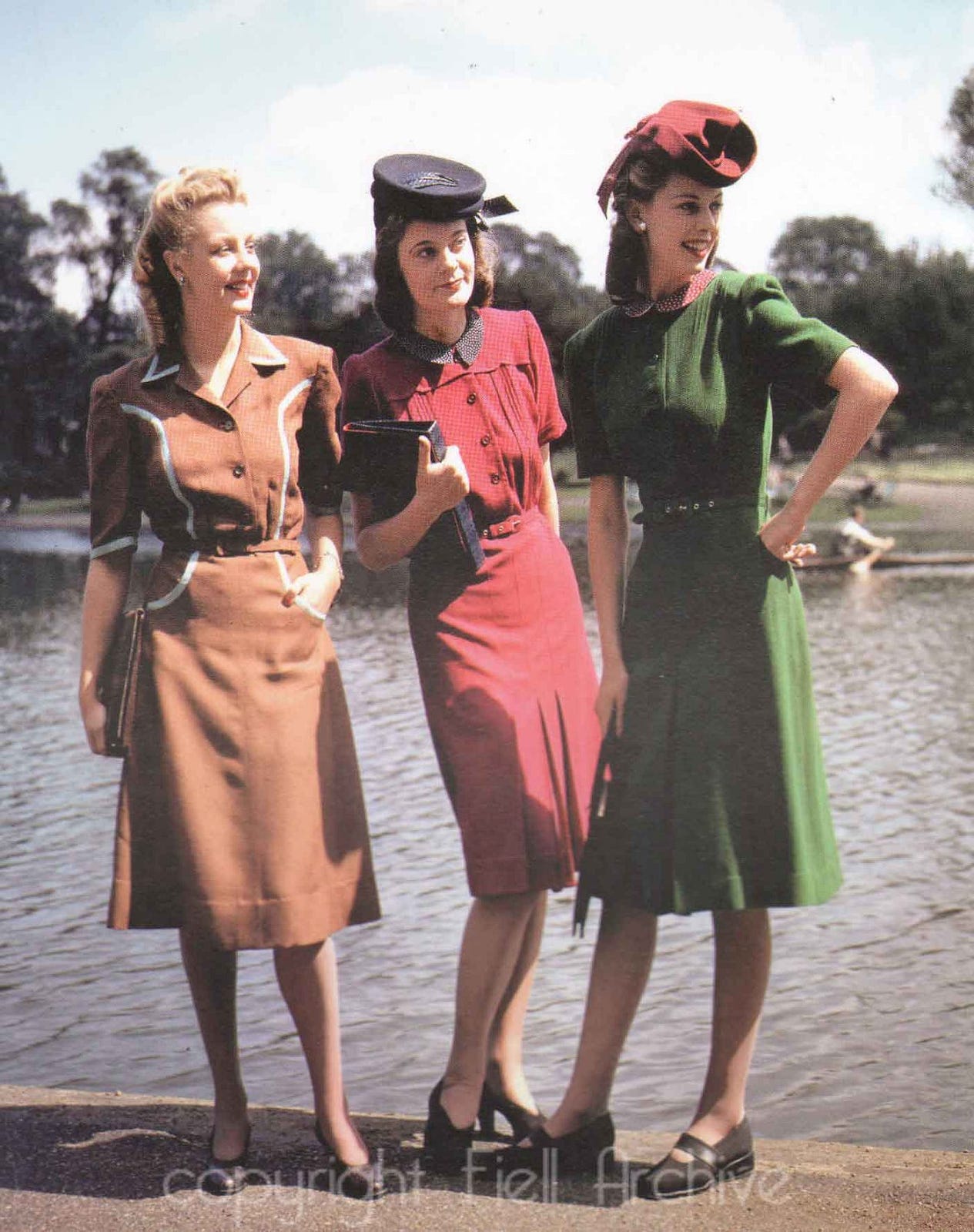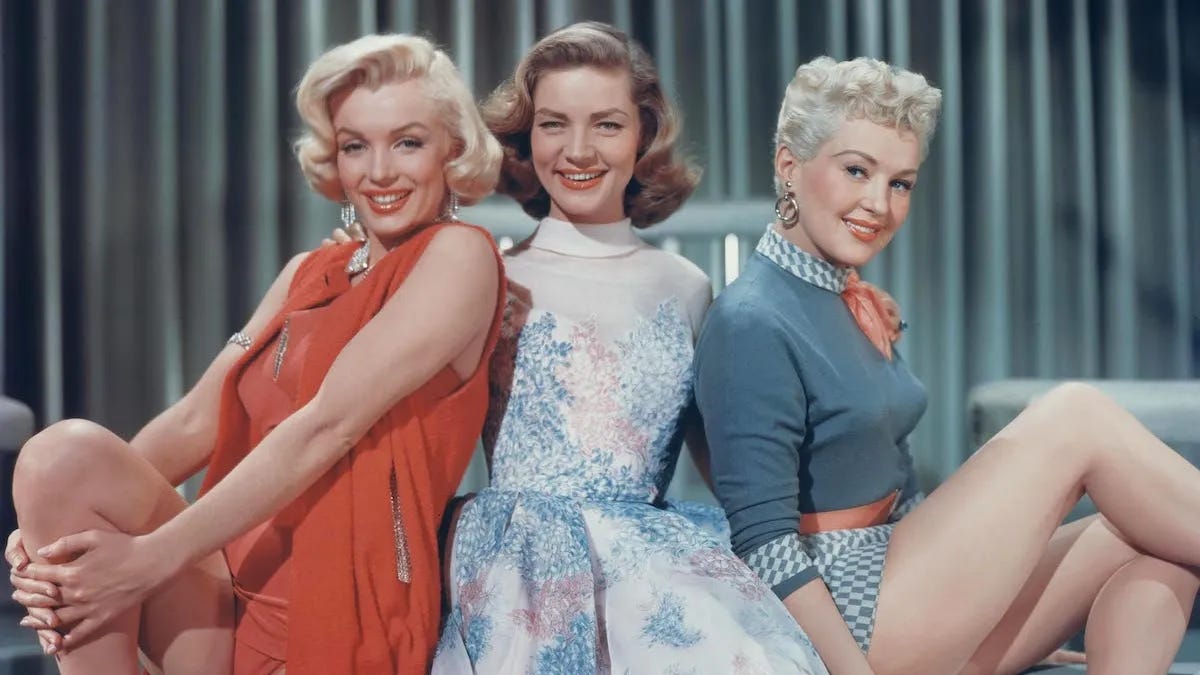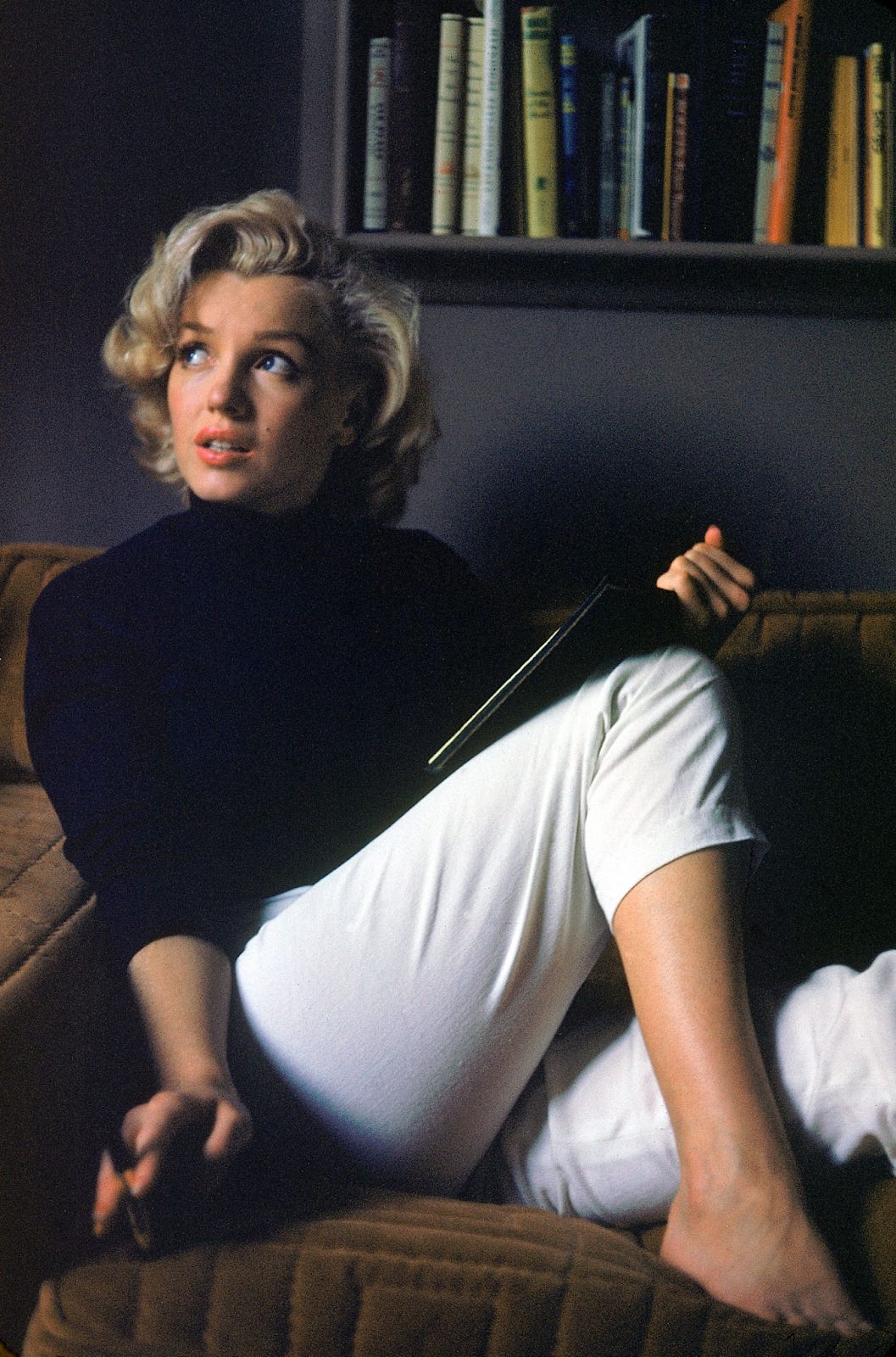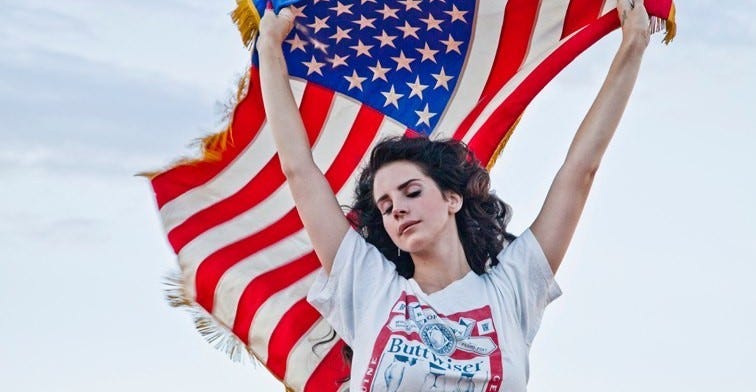I view fashion through the idea of eras.
The Eras Tour has arguably popularized the term eras, but even before, many used it in passing slang, filling in the blanks of “I’m in my ____ era.” Despite taking a large role in our society today, an era is quite simple in its meaning. An era is a period of time, a chapter of our history, a fragment of the overall frame.
Fashion has consistently been organized, analyzed, and compartmentalized by era. This has made the art of fashion extremely accessible to anyone with a willingness and a Pinterest account. A simple ‘insert year” fashion aesthetic’ search would give you thousands upon thousands of differing photos and pictures for inspiration. I do this quite frequently when I discover an inkling of an idea. It’s modern-day brainstorming and, coincidentally, how I brainstorm as an advertising major to develop an idea.
Throughout American history specifically, fashion has gone up, down, left, and right, demonstrating a truly flexible and versatile ability to encapsulate the times and their rhetorical stances. Whether it be the top-of-button sharpness of the forties and fifties, the mod gogo boots of the sixties, the freeing flares and fringe of the seventies, the shoulder pads and blazers of the eighties, the minimalism of the nineties, the bling of the early two-thousands, and the melting pot that has become definitive of the tens and twenties.
What makes fashion so exciting to me and, in fact, liberating is the way we live in an era where reference is everything. I’ve spoken in this blog before about how I believe there is a distinctive and important difference between reference and copying… and in this conversation, that line is blurred entirely because I don’t see anything wrong with copying an era of style on the whole. But I also do think there’s room for us to take the best and leave the worst.
This is a great way to describe the feeling that many wish they could’ve existed at older historical points. No, I don’t want to live in the fifties segregation politics or blatant racism… nor do I wish to live during times in which women were treated like objects and hardly could own a pair of heels without signed consent from her father or husband… or a time when being gay was a policed crime. However, like I said…
Take the best, leave the worst.
I want to talk specifically about the 1950s and 1960s today. I think, definitively, this period is one of the most exciting fashion-wise in America. I believe this is a period point in which we’ve seen the most inspiration taken to define future generations (The eighties borrowed the rigid prep of some fifties to inspire the blazers and shoulder pads of said era… while the seventies leaned on the mod approach of the sixties to inspire a looser style).
As I approach taking on vintage Americana before I take the skies and head to Paris, I wish to analyze and appreciate this incredible time in fashion.
Welcome to an Ode to the Golden Age.
Let’s start with the precursor to the fifties. The war consuming America… that being World War II defined the forties. It was a time of strife in America where everything took a back seat to the conflicts occurring overseas. However, we still saw distinctive trends form. In the early forties, fashion designers led with less rigid fashion… opting for less structured looks given that many people were working in factories to support the war. Square-shouldered jackets, blouses, and classic skirts. Men wore suits, sometimes overalls, or high-waisted pants--pleated and wide-legged--with a tucked sweater and collar underneath. Fedoras were also popular. The military style also morphed into American style at the time, with chinos, trench coats, and military jackets becoming popular. However, after the war ended, fashion looked to a time when a war-caused country's strife and economic pains did not bar it. Jackets became more fitted for women… while the opposite occurred with men. Cuffed pants were popular at the time, and a straight leg came into fashion for women.
Additionally, silhouettes became more rigid once more, especially with women, emphasizing the smaller waist and a broader shoulder (Shoulder pads and a structured shoulder came into style quickly). As such, we can look at the forties as a precursor to the fifties and even the sixties. It demonstrated how war and economic turmoil directly inspire trends to shift more than any other opposing force in society.
Enter the fifties. New materials at the time consisted of nylon and polyester, and fashion houses at the time began experimenting with them heavily. This was around the time we really saw established fashion houses begin to become legacy brands… like Coco Chanel or Christian Dior. In the fifties, Dior created arguably one of the most iconic silhouettes for a gown known in fashion history. The Dior gown silhouette was one that can be attributed to nearly every little girl’s idea of a beautiful dress, and even into adulthood, a Dior gown in this style represents opulence and a fantasy of sorts.
Hourglass figure started to become a phrase during this time, and if you didn’t have a waistline, you weren’t doing it correctly then. Most fashion trends, at their core, emphasized the waist. Petticoats, tweed dresses, pencil skirts, and the Dior dress. Meanwhile, men's fashion remained somewhat loose, but some tailoring was seen in the jackets. Pants were still pleated and looser in fit, but the more tailored suit jackets gave way to the classic silhouette of a men’s suit that has unfortunately been lost today (Stop making suits with skinny pants and a tailored jacket. It looks stupid. Looser pants. Tailored jacket. Run it back).
The fifties saw the return to the workforce, too, even allowing some women into jobs now after filling in for men who went off to combat. This meant that officewear became huge, with both men and women wearing blazer tops. Women wore pencil skirts with suit jackets made specifically in women’s style, while men remained in the classic suit and tie. In teens, poodle skirts were largely popular, and young men could often be seen in denim and a tucked, slim-fitting t-shirt. Leather jackets and Sports jackets came into sight as well.
Additionally, in the fifties, Chanel, as mentioned previously, had huge influences on fashion. Think Marilyn Monroe in a pencil skirt and a blouse with a prolific collar. Chanel’s preppy, conservative styles were also largely popular with significantly Christian America at the time. As such, sweaters, argyle patterns, ties, and collared shirts were men's picks at large.
The fifties represented a time in which style began to morph and take an identity after a period where it largely jumped back and forth between fashion and practical wear, given the nation's circumstances. We also saw a real emphasis on film and cinema with the continuing rise of Hollywood and its stars, meaning fashion only became more integral, as seen in motion pictures and the stars that acted in them. Icons like Marilyn Monroe, Audrey Hepburn, Judy Garland, James Dean, Mickey Rooney, and more were known for what they wore in photographs and to events and in said films. During these eras, iconic outfits like Marilyn’s pink dress or Audrey’s black gown with pearls and large frames were born. As such, the room for a developing sense of style and fashion in America led to aesthetics morphing and shifting into the sixties.
The sixties continued off the glamour of the fifties but also allowed room for the question, “But what if this rather than that?” We saw an era previously defined by silhouettes be challenged in the sixties with mod, structureless minidresses and gogo boots coming into style. In the same conversation, the once rigid and more conservative styles now gave way to a playful spirit that came with the sixties. Patterns like argyle blew up with additions of plaid and checkered prints coming into popularity at the time, as did extremely colorful clothes as a whole.
In the same way, culture seemed to be shifting, and women began to take more risks: Pants became fashionable and more acceptable during this decade, seeing women like stars (Marilyn or Audrey) wearing white caprese or denim pants… or even the average American woman doing the very same. And though I commented that an anti-silhouette trend came to light, that doesn’t negate that silhouettes being form-fitting and tight still remained supreme overall.
Men’s fashion continued to develop in the sense of business and officewear, but influences from films saw more casual looks, such as the James Dean t-shirt and trousers… or simple khakis with a good Ralph Lauren polo shirt.
As they developed, the sixties saw more room for imagination from the general public… and futurism became largely appealing to the nation of America as our country made tremendous advances, indicating innovation and a forward-thinking country (First Man on the Moon). This led to more innovative takes in fashion, as I had hinted at earlier with gogo boots and structureless minidresses. Staples like kitten heels, vinyl coats, knee-high boots, and colorful and bright dresses and clothes came into a new boom of popularity. Combined with new styles of hair like the high-ponytail or the beehive, it introduced an entirely modern take on fashion at the time. This forward-thinking led to the phasing out of the era as the late sixties set up the seventies styles of hippy wonderland.
But I digress… today is about the fifties and sixties.
Beyond this very concise identification of trends, staples, and pieces of these two definitive eras, it is imperative to signify the meaning of these two eras. I, and so many others, have forged deep connections to the fantasy that surrounds this time period in America. Americana has become a staple aesthetic for many, including popular artists like Lana Del Rey and even Taylor Swift for a moment in time. Ariana Grande, too, constantly draws inspiration from the sixties and fifties. I think this is largely due to the strange romantic feeling of these times. We view this era as ever-glamorous, and in my opinion, there’s a lot of truth there. Beyond all the bad, which trust…there is plenty, there is a core of romanticism. Combined with the sheer power of the stars and starlets of Hollywood, the emergence of the art of film, and every other form of art that expanded with it (fashion, makeup, music), we saw a real boom in creativity and beauty at this time. Fashion, no less, prospered in this golden light.
As I prepare to go abroad next fall, I’ve realized I must first conquer my American roots. There’s a part of me that feels ashamed to be from this country, and there is a lot to be ashamed of, no doubt… but in tackling the aesthetic and theme of Americana for myself, I’ve found that a reframe is necessary for those who exist beyond the incorrect politics and history of this country. We must reframe Americana as one that spits on the bad and now highlights the good. I believe Americana is gay. I believe it’s extremely queer. Most of our art was produced by queer people. Directors from those same 1950s films were gay men… gay women designed the costumes, and transgender people have driven trends and social movements beyond contempt. Straight people… what have you all done really? I should acknowledge that straight women have done a lot. This is really just a dump on straight, white, cisgender men. Americana is Black, Latino, Asian, Indigenous (!!!!!!!!!), Female, Gay, Transgender, and so much more than what it often is painted as.
We must take the brush and cover a white stain with a colorful canvas encompassing the real roots of Americana. Vintage can be ours. We can claim the good and glamour of the fifties and sixties and make better of where we were dismissed and disregarded. An Ode to the Golden Age is the title of this article because it is just that… an Ode. Oxford defines ‘Ode’ as “A lyric poem in the form of an address to a particular subject, often elevated in style or manner and written in varied or irregular meter.” I fixate on the wording, “...often elevated in style or manner…” because that is exactly what we do when taking back an aesthetic and theme that has conclusively been reserved for the white straight population.
An Ode to the Golden Age is a reinvention of Americana, an appreciation of the art that inspired, and an opportunity for many to experience the glamour they missed out on.
Americana… girl, fuck Donald Trump!

























